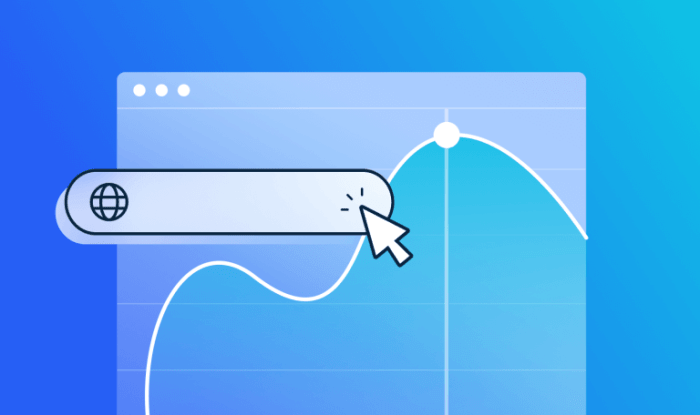Analyzing Website Traffic is like navigating the bustling hallways of an online high school, where understanding the flow of visitors is key to success. Get ready to dive into the world of website analytics and uncover the secrets behind online traffic patterns.
Understanding Website Traffic

Website traffic refers to the number of visitors a website receives over a specific period of time. It indicates the popularity and reach of a website among internet users.
Importance of Monitoring Website Traffic
Monitoring website traffic is crucial for several reasons:
- Assessing Performance: By tracking website traffic, businesses can evaluate the effectiveness of their online presence and marketing strategies.
- Identifying Trends: Analyzing traffic data helps in identifying trends, popular content, and user behavior patterns, enabling businesses to make informed decisions.
- Improving User Experience: Understanding website traffic allows businesses to enhance user experience by optimizing website layout, content, and navigation.
Why Analyzing Website Traffic is Crucial for Online Businesses
Analyzing website traffic is essential for online businesses because:
- Conversion Rate Optimization: By analyzing traffic data, businesses can identify areas for improvement and optimize conversion rates to increase sales and revenue.
- Competitive Edge: Monitoring website traffic helps businesses stay ahead of competitors by adapting strategies based on user behavior and market trends.
- Marketing Insights: Analyzing traffic data provides valuable insights into the effectiveness of marketing campaigns, allowing businesses to allocate resources efficiently.
Types of Website Traffic
Organic and paid traffic are two main types of website traffic that businesses focus on to drive visitors to their websites. Understanding the significance of direct traffic and the impact of referral traffic is crucial for optimizing website performance.
Organic Traffic vs. Paid Traffic
Organic traffic refers to visitors who find your website through search engines like Google without any paid promotions. This type of traffic is valuable as it indicates that your website is appearing in search results naturally, based on its relevance and quality. On the other hand, paid traffic involves visitors who click on ads or sponsored links to reach your website. While paid traffic can provide immediate results, organic traffic tends to be more sustainable in the long run.
Direct Traffic Importance
Direct traffic consists of visitors who type your website URL directly into their browser or have your website bookmarked. This type of traffic is essential as it indicates brand recognition, user loyalty, and the effectiveness of offline marketing efforts. Direct traffic is a strong indicator of your website’s credibility and reputation among users.
Referral Traffic Impact
Referral traffic comes from external sources such as other websites, social media platforms, or online directories that link to your website. Referral traffic can significantly impact your website performance by increasing visibility, driving new visitors, and improving search engine rankings. Building a strong network of referral sources can enhance your website’s authority and credibility in the online space.
Tools for Analyzing Website Traffic

When it comes to tracking website traffic, there are several popular tools that can help website owners gain valuable insights into their audience and user behavior. Two of the most widely used analytics platforms are Google Analytics and other third-party tools. Additionally, heatmaps are another valuable tool for analyzing user behavior on a website.
Popular Tools for Tracking Website Traffic
- Google Analytics: A free tool provided by Google that offers comprehensive insights into website traffic, user behavior, and conversions.
- Adobe Analytics: A robust analytics platform that provides advanced features for tracking and analyzing website traffic.
- Hotjar: Offers heatmaps, session recordings, and other tools to understand user behavior on a website.
- Matomo: An open-source analytics platform that prioritizes user privacy and data ownership.
Comparison of Google Analytics and Other Analytics Platforms, Analyzing Website Traffic
- Google Analytics: Widely used due to its user-friendly interface, robust features, and integration with other Google products like Google Ads.
- Other Analytics Platforms: Some platforms may offer more advanced features or customization options but may come with a steeper learning curve or higher costs.
Benefits of Using Heatmaps for Analyzing User Behavior
Heatmaps are a valuable tool for analyzing user behavior on a website as they visually represent where users are clicking, scrolling, or spending the most time on a page. This can help website owners identify areas of interest, optimize page layout, and improve user experience. By utilizing heatmaps in conjunction with other analytics tools, website owners can gain a more comprehensive understanding of user behavior and make data-driven decisions to enhance their website’s performance.
Interpreting Website Traffic Data
When analyzing website traffic data, several key metrics provide valuable insights into how users interact with your site and the effectiveness of your online presence. Understanding these metrics is crucial for making informed decisions to optimize your website performance and user experience.
Calculating Bounce Rate and Its Significance
Bounce rate is calculated as the percentage of single-page sessions where users leave your site without interacting further. A high bounce rate may indicate that visitors are not finding the information they need or that the page does not meet their expectations. It can also suggest issues with website design, usability, or content relevance. Monitoring bounce rate helps identify areas for improvement and refine your digital marketing strategy to engage visitors better.
Importance of Page Views and Unique Visitors
Page views represent the total number of pages viewed on your site, indicating user engagement and content consumption. Tracking page views helps assess the popularity of specific pages, content performance, and user behavior patterns. Unique visitors, on the other hand, count individual users visiting your site within a specified time frame. Understanding the ratio of page views to unique visitors provides insights into user retention, repeat visits, and overall site traffic quality.
Insights from Average Session Duration
Average session duration measures the average amount of time users spend on your site during a visit. This metric reflects user engagement levels, content relevance, and the overall quality of the user experience. A longer average session duration indicates that visitors are actively exploring your site, consuming content, and engaging with your offerings. By analyzing trends in average session duration, you can identify popular pages, optimize user pathways, and enhance your website to increase user retention and satisfaction.





